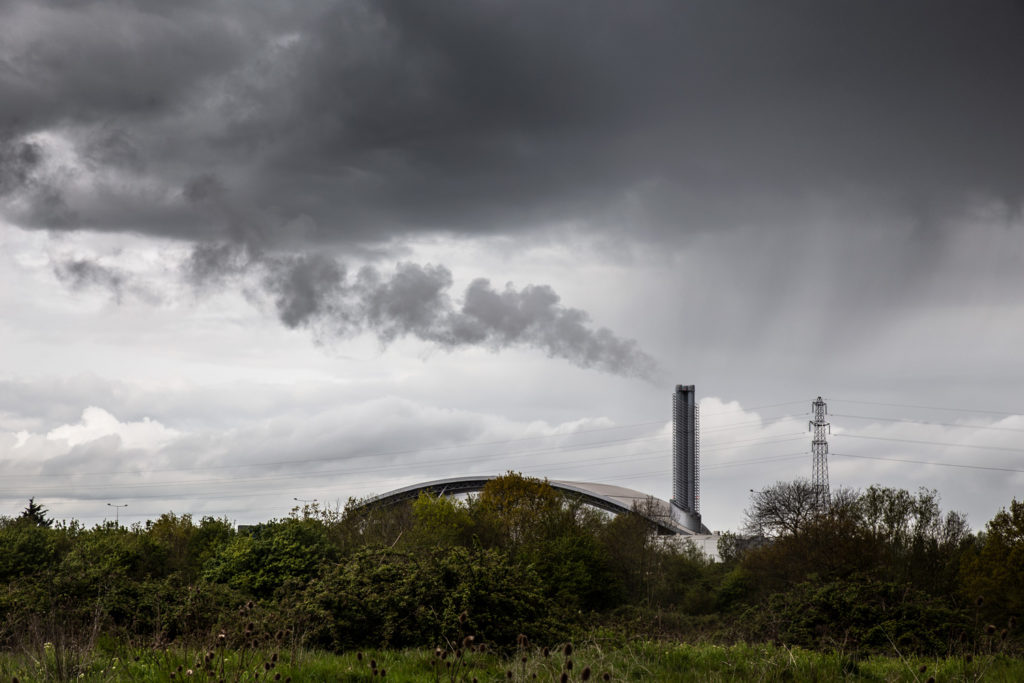Chris Jerrey
Photography
Colnbrook Incinerator
Four hundred and forty thousand tons of rubbish pass through the gates of Colnbrook Incinerator each year and are never seen again.
This kind of industrial magical thinking applies right along the chain of waste. Manufacturers have convinced us to accept extraordinary amounts of single-use packaging that has no further use once it is removed from the product. Hopefully, we diligently separate the recyclable items and put them in the correct bin. Once the bin has been emptied by the local council, we need never think about this stuff again. But it has to go somewhere, and if you live in the Slough area, your waste will be going into this incinerator.
Disposing of rubbish is difficult. Traditionally, it has been dumped in landfill sites, but as the material decomposes, large amounts of methane are produced. Methane in the atmosphere is much more effective at trapping the sun’s energy than carbon dioxide. So releasing methane is really, really bad for the climate.
Incinerating the rubbish avoids producing methane, but the process still produces roughly the same weight of carbon dioxide as the weight of rubbish fed into the process. The incinerator website is very proud of the 37 megawatts of electricity produced by burning this rubbish but less so about the carbon dioxide. No figure for emissions is offered.
Landfill material is usually about one-third carbon. The rest is water, metals and other minerals. When carbon is burned, it creates three times the mass of carbon dioxide (each carbon molecule bonds to two oxygen molecules). Just this single facility is probably producing at least 440,000 tons of carbon dioxide each year.
Rubbish is bad news for the climate. As soon as something is discarded, it becomes litter or landfill. Either way, it is a source of pollution. The only effective way to deal with the problem is to drastically reduce the amount of stuff we discard.